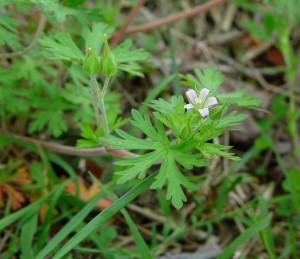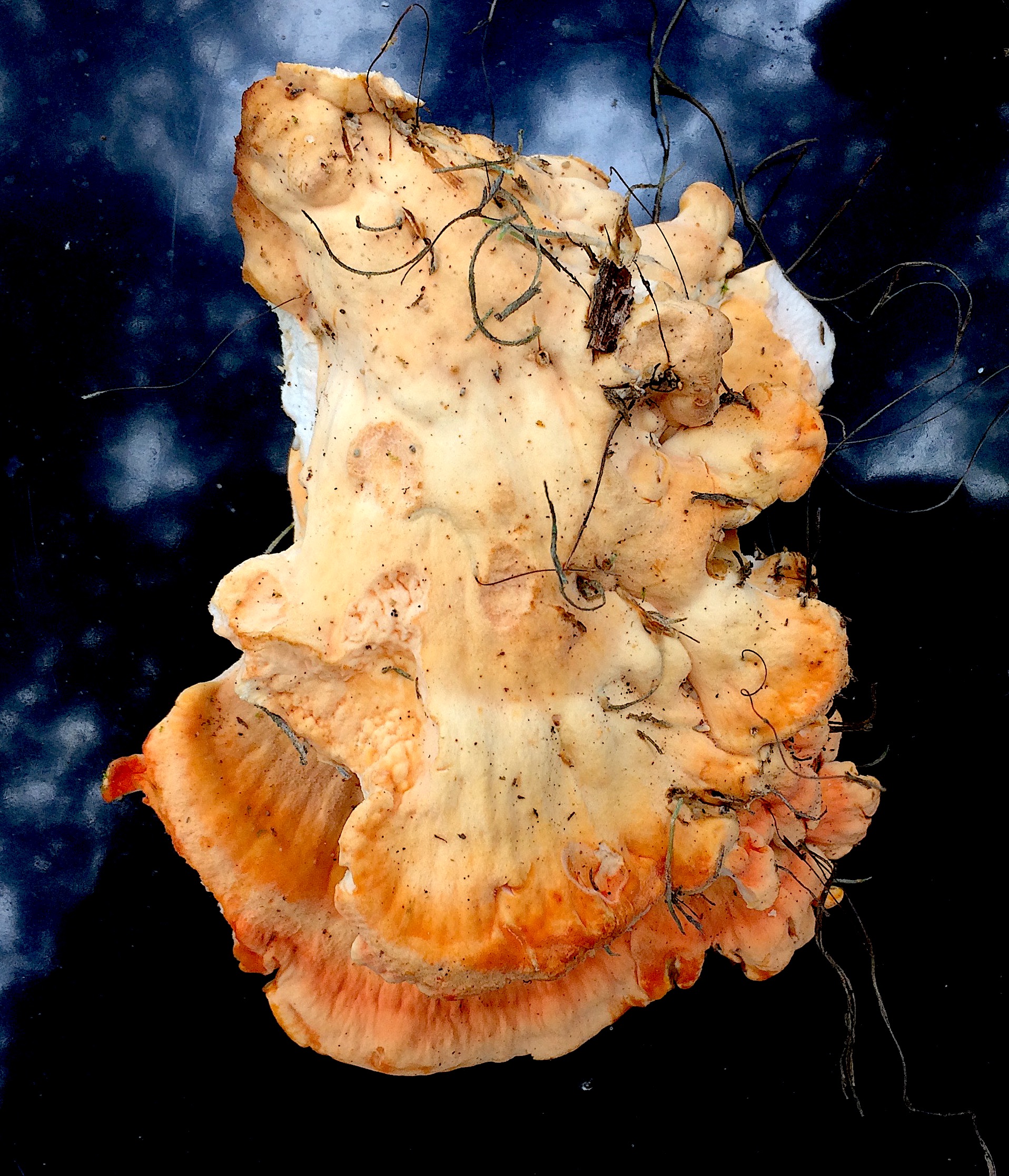
Chicken of the Woods. Photo by Green Deane
When is a cow not a cow? When it is Chicken Of the Woods, which we found during a foraging class this week. We have three speces of C.O.W.s locally. Laetiporus sulphureus, Laetiporus cincinnatus and Laetiporus gilbertsonii, all shelf fungus. A fourth fungus that is put into that group, Laetiporus persicinus, might not really be a Laetiporus. It also does not look like or taste like the other chickens. We took some Laetiporus sulphureus home and fried said. While the texture might remind one of chicken the flavor is derived from how it is cooked and what it is cooked with. It is a fugus of substance, it will not disappear in a dish. I sliced mine and fried in butter. Orange and sulphur colored Laetiporus sulphureus usually grows on the trunk or upperpart of the tree because it causes heart rot, locally often on oaks. Laetiporus cincinnatus is often at the base of a tree trunk where it causes butt rot. Laetiporus gilbertsonii — common in the gulf south — is found on the trunk and is beige in color. Laetiporus persicinus, is found on the base of oaks or growing on roots. It is usually round and stains brown where you handle it. No particular flavor. It is good for stews and the like and when cut and dried makes a good jerky.
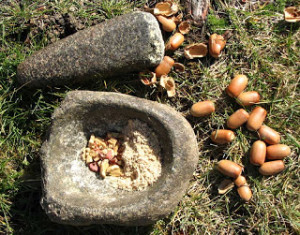
There are many way to process acorns after leaching.
Also masting now are our oaks. The amount of acorns in the fall is related to spring rains. More rain in spring, more acorns in the fall. Acorns as a food are a lot of work but also a lot of energy, it’s been the staple food for many ancient populations. Their preparation involved kids as each acorn must be cracked and the nut inside removed for processing (a great job for kids and a couple of rocks to smash with.) I have the suspicion that the family is the most foraging-efficient group, and a village a group of foraging groups. Men think in vectors roam far from home to hunt meat then bring it back. Women go to landmarks to forage and bring it home. Kids help in the processing. Thus acorns. There are two general group, red and black acorns. The former have pointy leaves, the latter do not, the former have an extra layer of material in the shell which gives the nut and water a pink tinge. Acorns have tannins which should be leached out before consuming. How that can be done is subject of books. Acorns high in tannins store well, so the native put them in special containers, acorns low in tannin were processed for immediate or near-term use. Some Live Oaks have acorn with no tannin. The largest local acorn is the chestnut oak. You can read more about acorns here.
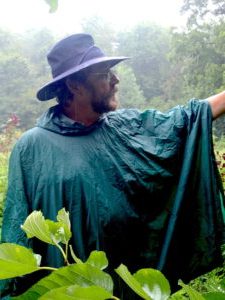
Classes are held rain or shine (but not during hurricanes.)
Foraging classes On the east coast of Florida this weekend, let’s hope the weather holds. One worry about Saturday’s class is whether the preserve will be flooded from recent rains. That affects only the western section but removes wandering by the river.
Nov 18th Lori Wilson Park, 1500 N Atlantic Ave, Cocoa Beach, FL 32931, meet at the north bathrooms, 9 a.m. to noon.
Nov 19th , George LeStrange Preserve, 4911 Ralls Road, Fort Pierce, FL, 34981. 9 a.m. to noon.
Nov 25th , Wickham Park, Melbourne Florida, 9 a.m. to noon. Meet at the dog park.
Nov 26th Mead Gardens, 1500 S. Denning Dr., Winter Park, FL 32789. 9 a.m. to noon Meet at the bathrooms.
To read more about the classes, to pre-pay or sign up, go here.
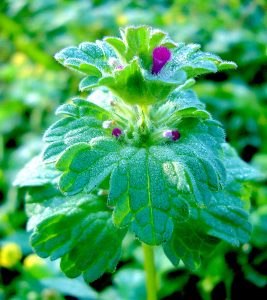
Henbit, one of the few “sweet” springtime greens. Photo by Green Deane
The first is Henbit. It’s in the mint family but does not smell or taste minty. It does, however, have a square stem and the blossoms resembles mints. In northern climates it is one of the first green plants to pop up after the snow goes (it and chickweed.) Locally it likes our cooler months of the year. It was esteemed by the natives because among all the annual greens it is not spicy but rather mild if not on the sweet side. What can be confusing about it is that the leave shape and stem length is different from young to old leaves. But they all have a scalloped shape. It also has a similar looking relative that is also edible called Dead Nettle. You can read about Henbit here.
Also found in lawns this time of year are wild geraniums, usually Cranesbill or Stork’s Bill. (Why one is one word and the other two-words possessive I do not know.) Botanically they are Geranium carolinianum and Erodium circutarium. Neither is great foraging. In fact both are more medicinal than edible but they seem to get mention in a variety of foraging books. The problem is they are extremely bitter. You might be able to toss a little bit of both in a salad but that’s about the extent of it. If you have what you think is a Cranesbill or a Stork’s Bill but it has more of a bottle brush blossom than five petals you might have the non-edible Fumaria. It comes up this time of year and from a distance the leaves can remind one of the wild geraniums. To read more about them go here.
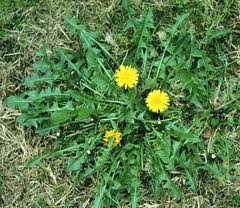
Dandelions are a common green, photo by Green Deane.
While looking for yellow-blossomed Dandelions also start looking for the more extroverted yellow-blossomed Wild Radish and Wild Mustard. These two peppery species look very similar and are used the same way. There are several ways to tell them apart but on a glance one identifier of the radish is that it grows in a windrow way whereas mustards tend to grow straight up. Radish blossoms are always yellow, mustard blossoms can be yellow or white. I usually start to find tasty Wild Radishes and Wild Mustards when the nights start getting cooler. To read more about Wild Radish, go here. Wild Mustards click here.
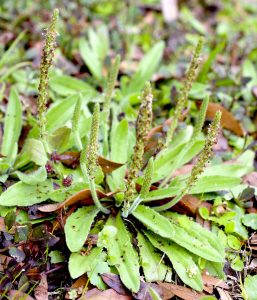
Our native Plantago is small and hairy. Photo by Green Deane
There are Plantains that look like tough bananas and there are Plantains that are low and leafy plants. No relation. Just two different groups with the same common name. Plantains can be native or non-native. The one pictured left is native, the Dwarf Plantain. We saw one Sunday in our foraging class at Mead Gardens. As a genus the plants are well-known. The leaves are edible raw when young. As they age they become more bitter and stringy. Cooking makes them palatable up to a point. Then they move into the astringent medical realm. They are used on bites, stings and to help puncture wounds heal. Seeds are edible once produced and are the source of the commercial dietary fiber psyllium. When finely ground the seeds are sold under the brand name Metamucil. There are numerous species of Plantagos (Plantains) with at least four common locally, P. virginiana, P. major, P. lanceolata and P. rugelii the latter which strongly resembles P. major. They are all used the same way. You can read about the Plantains here.
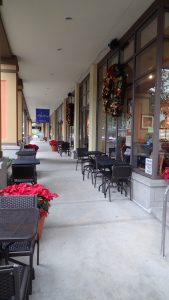
Panera’s in Winter Park where we start and finish the Urban Crawl.
My annual Urban Crawl #12 is coming up, on Dec. 22nd, 2023. A reasonable question is what about foraging in a city? There is some surprising research. Dan Brabaner is a geoscience professor at Wellesley College, Boston. With some undergraduate students they studied preserved food collected from fruit trees and the like in the urban Boston area. What they found was cherries, apples, peaches and herbs were relatively low in lead and arsenic. That is, a serving had less amounts of these toxins than the allowed daily amount for a child. The team also did not find a significant difference between peeled and unpeeled fruit. The fruit was low in toxic chemical because they are the furthest away from any toxins in the soil. This would apply to tree nuts as well. Leafy greens faired well, too, because they grow fast and 1) don’t have time to accumulate toxins and 2) most air pollution on them can be washed off. Brabander also analyzed foraged food from plants growing in the urban environment not growing on agricultural soil. These foods had higher micronutrients because they were not growing on worn-out agricultural soil. Calcium and iron were higher as were manganese, zinc, magnesium and potassium. Thus we know that not only do “weeds” pack more of a nutritional punch because they are wild but also because they can be growing in better soil. My Urban Crawl is a free class Friday Dec. 22nd in Downtown Winter Park. We meet in front of Panera’s at 10 a.m. We wander south to the college, stop at Starbucks, go east to the public library area, then back to Panera’s. Park in the parking garage behind Paneras. If you park more than three hours on the streets of Winter Park you can get a ticket (this has happened in previous years.)

You get the USB, not the key.
172-video USB would be a good end of spring present and is now $99. My nine-DVD set of 135 videos has been phased out. The USB videos are the same videos I have on You Tube. Some people like to have their own copy. The USB videos have to be copied to your computer to play. If you want to order the USB go to the DVD/USB order button on the top right of this page. That will take you to an order form. I’d like to thank all of you who ordered the DVD set over the years which required me to burn over 5,000 DVDs individually.

Green Deane Forum
Want to identify a plant? Perhaps you’re looking for a foraging reference? You might have a UFO, an Unidentified Flowering Object, you want identified. On the Green Deane Forum we — including Green Deane and others from around the world — chat about foraging all year. And it’s not just about warm-weather plants or just North American flora. Many nations share common weeds so there’s a lot to talk. There’s also more than weeds. The reference section has information for foraging around the world. There are also articles on food preservation, and forgotten skills from making bows to fermenting food.
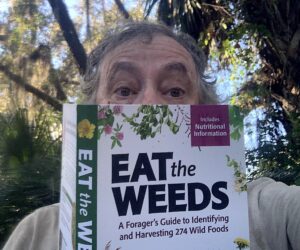
Finally, a physical copy of the book.
Now in print is EatTheWeeds, the book. It has 274 plants, 367 pages, index, nutrition charts and color photos. Several hundred have been pre-ordered on Amazon. Most of the entries include a nutritional profile. Officially it will be published December 13th (to suit the publisher publicity demands) and apparently to appeal to the winter market. Orders via Amazon are scheduled to arrive Dec. 5th.
This is weekly newsletter #580. If you want to subscribe to this free newsletter you can find the sign-up form in the menu at the top of the page.
This newsletter is late because mail chimp is increasingly difficult to wok with. Any one have a suggestion for a mailing service?

